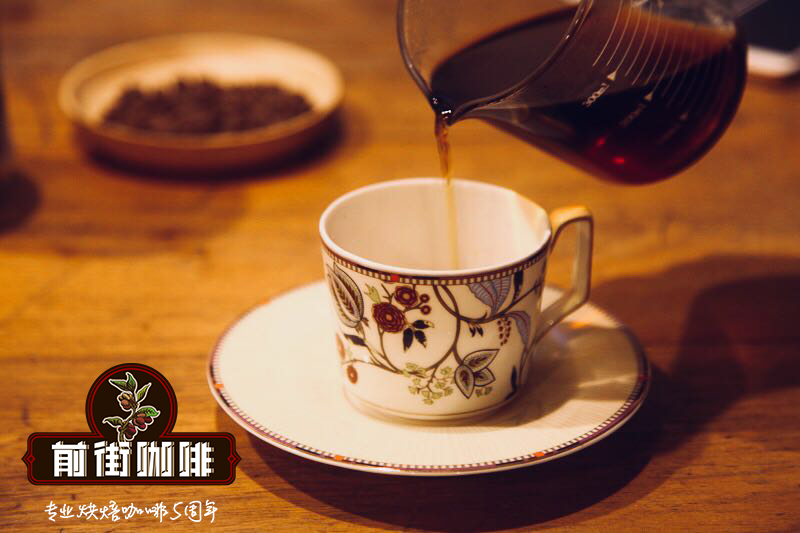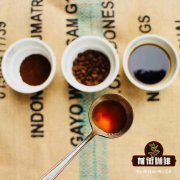Market share of Jamaican Blue Mountain Coffee how to distinguish the planting conditions of Jamaican Blue Mountain Coffee

Professional coffee knowledge exchange more coffee bean information please follow the coffee workshop (Wechat official account cafe_style)
Jamaican Blue Mountain Coffee
Most people know that the price of a cup of real Jamaican Blue Mountain coffee should be in the triple digits, but did you know that not all blue beans can brew the flavor of Jamaican Blue Mountain coffee? Because the authentic Jamaican Blue Mountain Coffee flavor is a combination of beans and processing technology, rather than simple imported blue mountain beans.
Market share:
Jamaican Blue Mountain Coffee has always been a divine existence in China, and almost every coffee shop must claim to have it. It's just that not many people really use blue mountain beans. According to Jamaica Coffee Bureau export statistics as of 2004, 85% of the limited Blue Mountain coffee bean quotas were exported to Japan, 5% to the United States, 5% to Europe and 5% to other countries. However, China accounts for 15% of the global consumption and distribution of authentic Jamaican Blue Mountain coffee, according to the International Coffee Association. This is due to the fact that some shares of Jamaican Blue Mountain coffee in Japan, Australia and Europe are exported to Taiwan through direct subsidiaries.
Statutory processing plant:
Some of the blue mountain coffee beans that enter Taiwan are raw beans, that is, unprocessed coffee beans, while others are ripe beans processed by four legal processing plants in the Blue Mountains of Jamaica. However, according to the Coffee Association, the price difference between raw and cooked beans of Jamaican Blue Mountain Coffee is nearly ten times. Because Jamaica Blue Mountain coffee beans not only pay attention to origin origin, but also pay great attention to processing methods. If imported raw beans, on the one hand, they can not enjoy the perfect flavor of Jamaican Blue Mountain Coffee, on the other hand, they are easy to be mixed with other coffee beans by imported traders, the intermediate process is not supervised, or the storage environment is inappropriate, resulting in the death of top Blue Mountain Coffee.
Certificate of Origin:
Jamaican Blue Mountain coffee beans exported in Jamaica must pass the inspection and certificate of origin of the coffee shop before they can be allowed to be exported. At the same time, they must use the Jamaican Blue Mountain coffee trademark registered by the coffee bureau in more than 20 countries around the world. Can really be called authentic Jamaican Blue Mountain coffee beans. Among them, the Jamaica Coffee Bureau stipulates that the Jamaican Blue Mountain Coffee must be grown in the legal coffee area in order to be called the real Jamaican Blue Mountain Coffee. It is authorized to use the coffee bureau registered trademark: Blue Mountain Coffee.
Planting conditions:
The legal cultivation area of Jamaican Blue Mountain Coffee is on the eastern side of the island of Jamaica, with a total altitude of 7402 feet. Only at an altitude of 3000mur5000 feet can a balanced and slightly acidic Jamaican Blue Mountain Coffee be grown. Only in this altitude Blue Mountain area, the Jamaican Blue Mountain Coffee is considered to be 100% Jamaica Blue Mountain Coffee. The coffee grown below 3000 feet above sea level is alpine coffee, which is licensed to use High Mountain Coffee. The total amount of alpine coffee grown is five times that of Jamaican Blue Mountain coffee, and most private estates grow alpine coffee for export and domestic sale as a tourism specialty. As for the blue mountain area above 5000 feet above sea level, the jungle is dense and is not suitable for any crop.
Quality check:
Like red wine produced by famous houses, Jamaican Blue Mountain Coffee is also born in manors. the processing level of famous houses is much better than that of other processing plants, which is called legal manor. In the Jamaican Coffee Industry Regulation, the Jamaican Coffee Authority authorizes several large estates to centrally process coffee fruits, export Jamaican Blue Mountain coffee beans and use the Jamaican Blue Mountain Coffee trademark. to maintain the reputation and quality of Jamaican Blue Mountain Coffee.
Important Notice :
前街咖啡 FrontStreet Coffee has moved to new addredd:
FrontStreet Coffee Address: 315,Donghua East Road,GuangZhou
Tel:020 38364473
- Prev

How to make boutique coffee? what are the standards for where to produce and grow boutique coffee?
Professional coffee knowledge exchange more coffee bean information please follow the coffee workshop (Wechat official account cafe_style) what is boutique coffee? In a world where ◆ imitates wine, people often ask, "what is boutique coffee?" To put it simply, it means "coffee with good flavor", but if you say so, you will only get "Blue Mountain or Hawaii."
- Next

Jamaica Blue Mountain Coffee Classification Blue Mountain Coffee Secrets Understanding Blue Mountain Coffee
Professional coffee knowledge exchange More coffee bean information Please pay attention to coffee workshop (Weixin Official Accounts cafe_style) Jamaica Blue Mountain Coffee Most people know that the price of a cup of real Jamaica Blue Mountain Coffee should be in three figures, but do you know that not all Blue Mountain beans can make the flavor that Jamaica Blue Mountain Coffee should have? Because authentic Jamaica Blue Mountain coffee flavor is
Related
- Beginners will see the "Coffee pull flower" guide!
- What is the difference between ice blog purified milk and ordinary milk coffee?
- Why is the Philippines the largest producer of crops in Liberia?
- For coffee extraction, should the fine powder be retained?
- How does extracted espresso fill pressed powder? How much strength does it take to press the powder?
- How to make jasmine cold extract coffee? Is the jasmine + latte good?
- Will this little toy really make the coffee taste better? How does Lily Drip affect coffee extraction?
- Will the action of slapping the filter cup also affect coffee extraction?
- What's the difference between powder-to-water ratio and powder-to-liquid ratio?
- What is the Ethiopian local species? What does it have to do with Heirloom native species?

